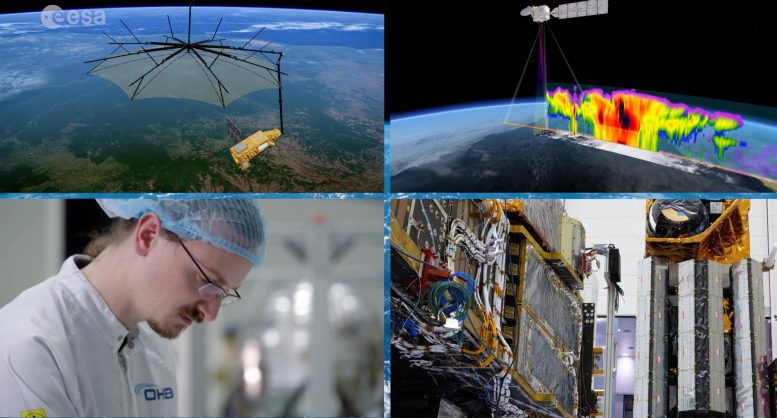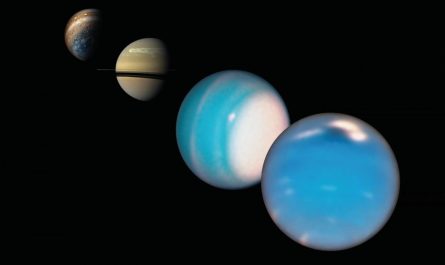

ESA’s 2023 in space exploration featured major milestones: the Juice mission to Jupiter, Euclid telescope’s dark matter studies, Aeolus mission’s end, the Zero Debris Charter for space debris, and Galileo’s new high-accuracy service. Key developments included ESA’s Hera spacecraft for asteroid impact analysis and advancements in Earth observation technology. Credit: ESA
2023 was a landmark year in space exploration for the European Space Agency (ESA), marked by significant missions like Juice’s journey to Jupiter, the launch of the Euclid space telescope for dark matter research, and the decommissioning of ESA’s Aeolus mission.
The year also saw advancements in Earth observation technologies, initiatives to address space debris, and collaborative efforts in asteroid impact studies. Notably, the Galileo satellite system’s new high-accuracy service and the first hardware tests for its second generation of satellites were significant milestones.
2023’s highlight was the highly anticipated launch of Juice, Europe’s Jupiter Icy Moon Explorer. The Juice spacecraft was placed on course to Jupiter on the second-to-last Ariane 5 launch vehicle in April. After an eight-year journey, Juice will begin observing the giant gas planet and its three large ocean-bearing moons – Ganymede, Calisto, and Europa.
The Euclid space telescope was launched in July with the aim of unraveling the enigmas of ‘dark matter’ and ‘dark energy’. Euclid’s first images were released in November, revealing razor-sharp astronomical images with detail never before seen by a telescope across such a large patch of the sky.
After almost five years in space, ESA’s Aeolus wind mission was retired. This trailblazing mission was tasked with observing wind patterns from space thereby improving weather forecasts and climate models.. Aeolus data and technology will have an important role to play in the accuracy of future weather forecasting. On July 28, it burned up in an assisted re-entry – the first assisted re-entry by a mission that was not designed to do so.
As space debris becomes an increasingly serious issue, ESA is determined to search for solutions. Together with its commercial and institutional partners, ESA has developed the ‘Zero Debris Charter’, launched this year. By signing the Charter, space entities worldwide can register their intent to work together towards the sustainable use of Earth’s orbital environment.
Earlier in in 2023, MTG-I1, the first of the Meteosat Third Generation missions, sent back its first images. The satellite was launched in 2022 and carries two instruments: a flexible combined imager and a lighting imager. Both instruments performed beyond expectation and a stunning combined image from both was revealed.
Earth observation is key to keeping our planet and the population as a whole, safe. Today, monitoring earthquakes, forest fires or flooding from space already helps to coordinate rescue response but the data can also be used to better understand phenomena such as climate change and support the IPCC climate reports.
Last year, NASA’s Dart mission impacted on a small moonlet of the asteroid Didymos, changing its course. We’ll soon be launching ESA’s Hera spacecraft to collect data on the aftermath of this collision. The Hera spacecraft was integrated and underwent testing this year in ESA ESTEC’s test center in the Netherlands.
2023 also saw the first hardware tests for the second generation of Galileo satellites but even more importantly the Galileo High Accuracy Service was launched in January. This new service delivers centimetre accuracy from space further cementing Galileo’s reputation as the most accurate satellite navigation system in the world.

